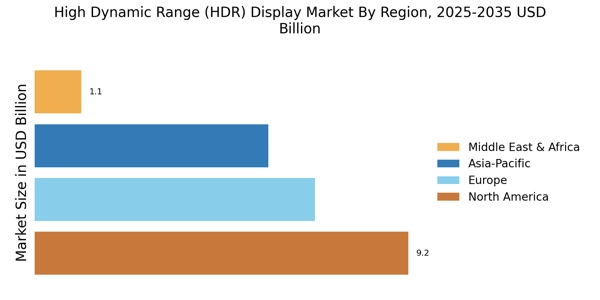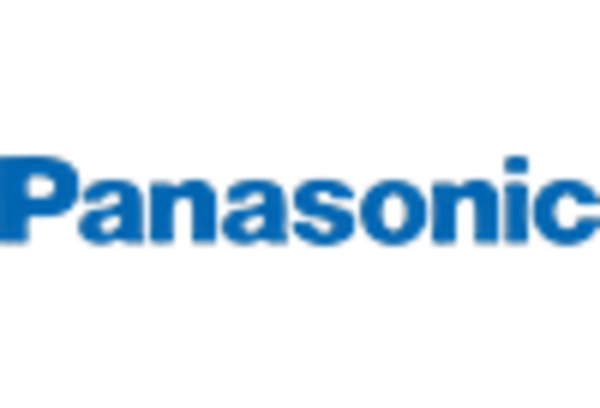Advancements in Display Technology
Technological advancements play a crucial role in shaping the High Dynamic Range (HDR) Display Market. Innovations in display technologies, such as OLED and Mini-LED, have significantly enhanced the performance of HDR displays. These technologies allow for better color accuracy, deeper blacks, and higher brightness levels, which are essential for delivering the HDR experience. As manufacturers continue to refine these technologies, the cost of production is expected to decrease, making HDR displays more accessible to a broader audience. Furthermore, the integration of artificial intelligence in display calibration is likely to improve user experience, thereby driving demand. The ongoing research and development in this field suggest a promising future for HDR displays, with potential market growth driven by these advancements.
Increase in HDR-Compatible Content
The availability of HDR-compatible content is a pivotal driver for the High Dynamic Range (HDR) Display Market. Streaming services, such as Netflix and Amazon Prime Video, have expanded their libraries to include a wide array of HDR content, ranging from movies to documentaries. This increase in content availability encourages consumers to invest in HDR displays to fully appreciate the enhanced visual quality. Recent statistics indicate that the number of HDR titles available on major streaming platforms has doubled in the past year, reflecting a growing commitment to high-quality content. As more content creators adopt HDR standards, the demand for HDR displays is likely to rise, further propelling market growth. This trend underscores the symbiotic relationship between content availability and display technology.
Government Initiatives and Standards
Government initiatives and the establishment of standards are influencing the High Dynamic Range (HDR) Display Market. Regulatory bodies are increasingly recognizing the importance of HDR technology in enhancing visual experiences across various platforms. Initiatives aimed at promoting digital content quality and accessibility are likely to drive the adoption of HDR displays. Furthermore, the development of industry standards for HDR content and display compatibility is expected to facilitate smoother integration of HDR technology into existing systems. As governments and organizations work towards creating a more standardized approach to HDR, the market may experience accelerated growth. This alignment of standards could also encourage manufacturers to invest in HDR technology, knowing that there will be a consistent demand for compliant products.
Rising Adoption in Professional Applications
The High Dynamic Range (HDR) Display Market is witnessing a rising adoption of HDR technology in professional applications, particularly in fields such as photography, video production, and graphic design. Professionals in these industries require displays that can accurately reproduce colors and contrast, making HDR displays an attractive option. The increasing use of HDR in professional settings is driven by the need for precise visual representation, which is essential for high-quality output. As more professionals recognize the benefits of HDR technology, the market is likely to expand. Additionally, educational institutions and training centers are incorporating HDR displays into their curricula, further solidifying the technology's presence in professional environments. This trend indicates a broader acceptance of HDR technology across various sectors.
Growing Consumer Preference for High-Quality Visuals
The High Dynamic Range (HDR) Display Market is experiencing a notable shift in consumer preferences towards high-quality visuals. As consumers increasingly seek enhanced viewing experiences, the demand for HDR displays has surged. This trend is particularly evident in sectors such as gaming and home entertainment, where vivid colors and improved contrast ratios are paramount. According to recent data, the market for HDR displays is projected to grow at a compound annual growth rate of approximately 20% over the next five years. This growth is driven by the proliferation of 4K and 8K content, which necessitates displays capable of rendering such high resolutions effectively. Consequently, manufacturers are investing heavily in HDR technology to meet these evolving consumer expectations.

















Leave a Comment